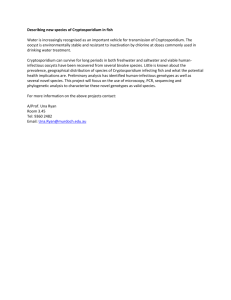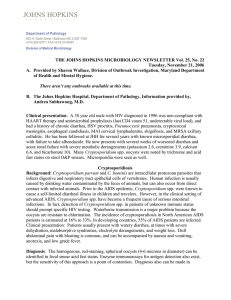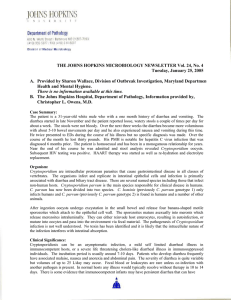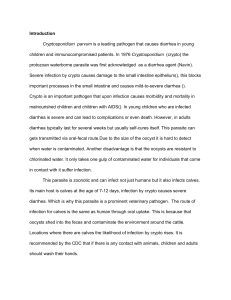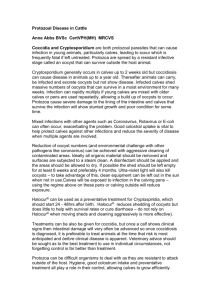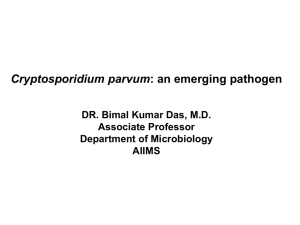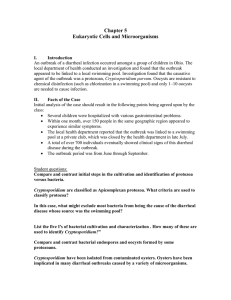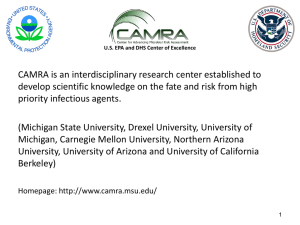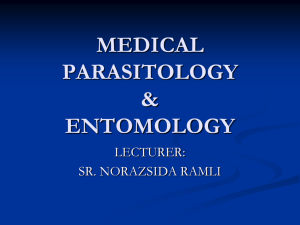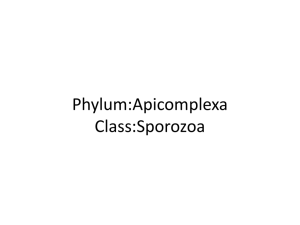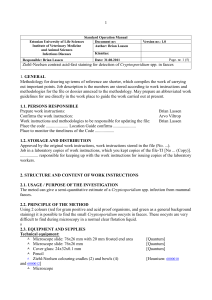Cryptosporidium spp
advertisement
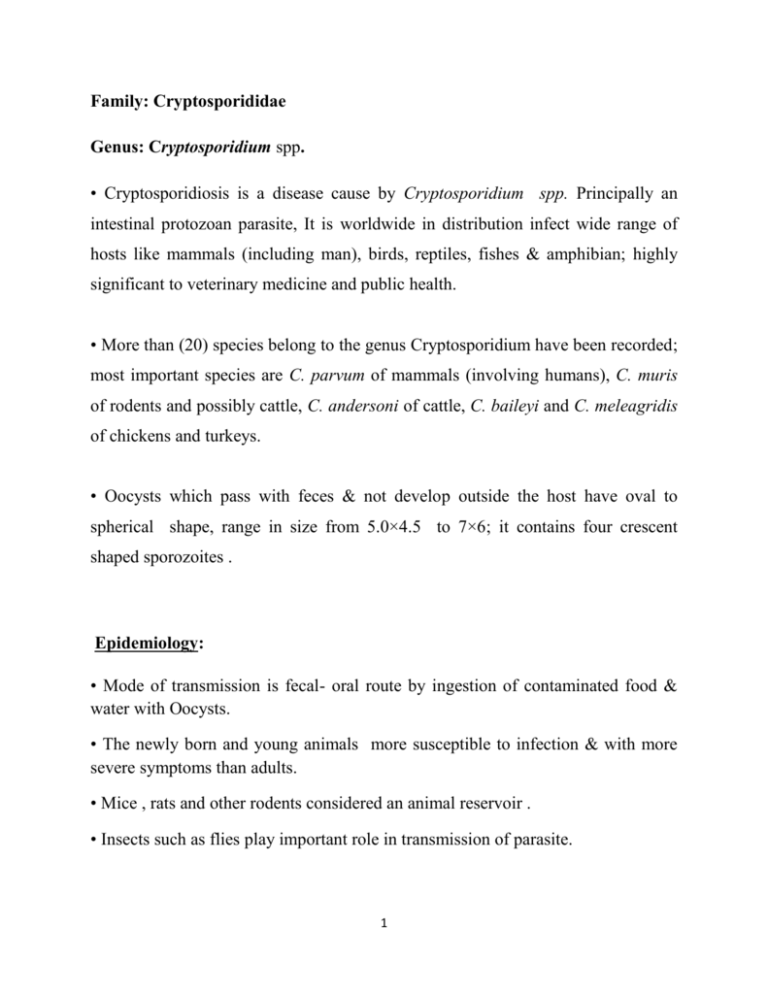
Family: Cryptosporididae Genus: Cryptosporidium spp. • Cryptosporidiosis is a disease cause by Cryptosporidium spp. Principally an intestinal protozoan parasite, It is worldwide in distribution infect wide range of hosts like mammals (including man), birds, reptiles, fishes & amphibian; highly significant to veterinary medicine and public health. • More than (20) species belong to the genus Cryptosporidium have been recorded; most important species are C. parvum of mammals (involving humans), C. muris of rodents and possibly cattle, C. andersoni of cattle, C. baileyi and C. meleagridis of chickens and turkeys. • Oocysts which pass with feces & not develop outside the host have oval to spherical shape, range in size from 5.0×4.5 to 7×6; it contains four crescent shaped sporozoites . Epidemiology: • Mode of transmission is fecal- oral route by ingestion of contaminated food & water with Oocysts. • The newly born and young animals more susceptible to infection & with more severe symptoms than adults. • Mice , rats and other rodents considered an animal reservoir . • Insects such as flies play important role in transmission of parasite. 1 • Cryptosporidium spp. have very short life cycle (not exceed than 72 hours) which participate in distribution of infection, more over it have small infective dose (ingestion of 10 Oocysts enough to induce infection). • The Oocysts have highly innate resistant to the chemicals & it also resist water sterilization by chlorine, to kill the parasite in the drinking water we must use other methods like heating, filtration and by Ozone. However, the greatest results obtained by sterilization with radiation. Life Cycle: • Direct. •After ingestion, sporozoites will release from Oocyst and invade microvillous border of lower half of the small intestine lie in a vacuole just beneath the host cell membrane (intracellular but extracytoplasmic); undergo two or three schizont generations, followed by sexual development and oocyst production within 72 hours; oocysts sporulate before leaving the cells and pass in the feces. • Prepatent period can be as short as 3 days. • Oocysts are extremely resistant to environmental conditions and most man-made chemicals. Pathogenesis and Clinical Signs: • parasite present in the epithelial cells of gastrointestinal tract particularly ileum; cause change in the shape and then death of infected cells leads to sloughing 2 epithelium, it also cause changes in osmotic pressure of these cells ; these changes then cause the characteristic severe, watery diarrhea. • The disease usually self-limiting, lasting 1–3 weeks in; lesions are mild to moderate; severity of disease is exacerbated in the presence of other pathogens (e.g., rotavirus in calves). Diagnosis: 1- Detection methods include: Direct normal saline smear: can be air dried and stained modified Zheil-Nelson stain. ELISA test: several test kits commercially available for humans; may be useful in other mammals; Immunofluorescence test: 2- We can find developmental stages on histological section in microvillous border of affected tissue. Treatment and Control: • Paromomycin has been shown capable of preventing clinical signs and mortality and decreasing oocysts output in calves, kids, and cats. • Control is difficult; strict sanitation is needed; separation of susceptible animals from dams may be required including separate personnel to care for each. 3
